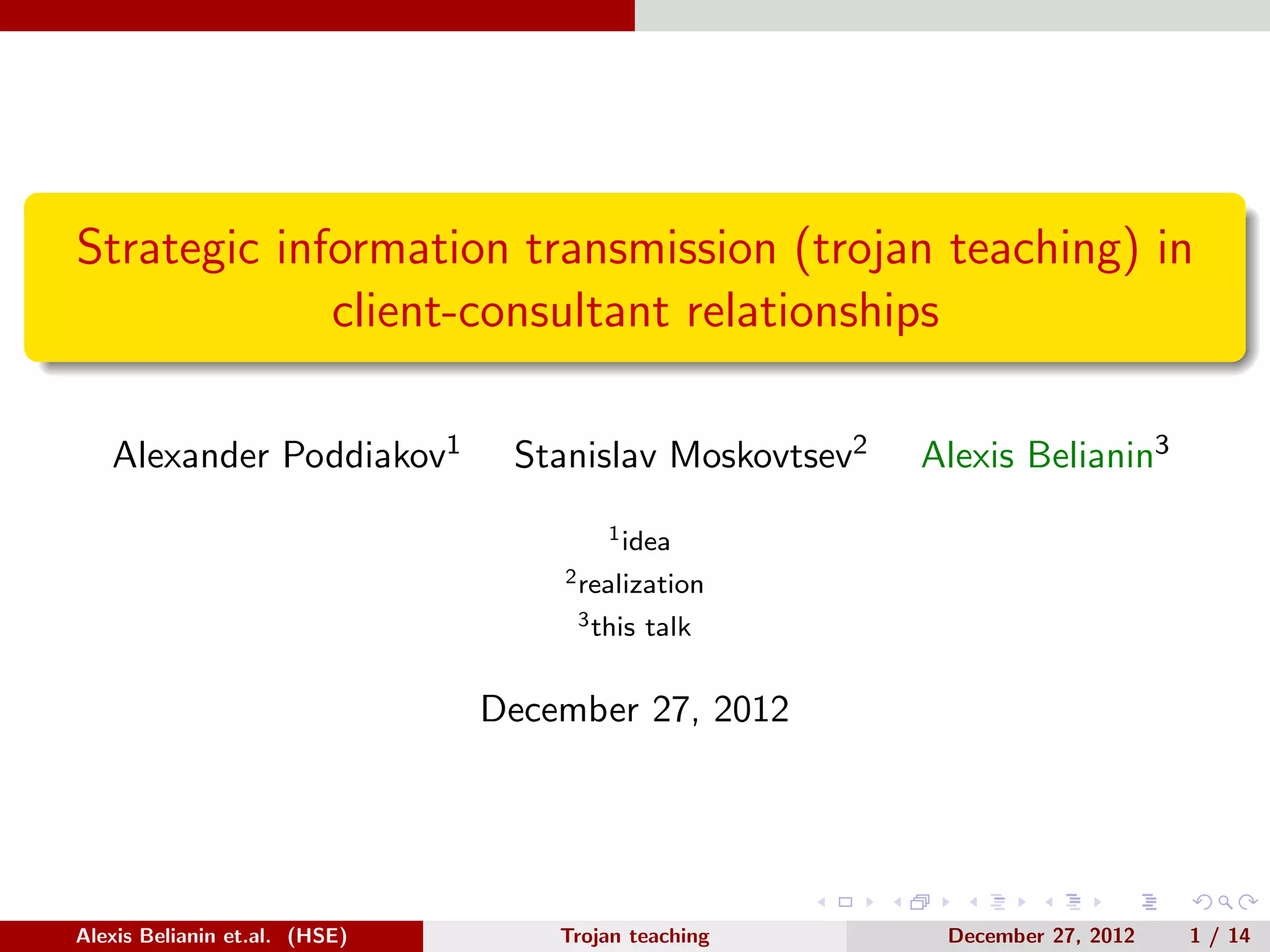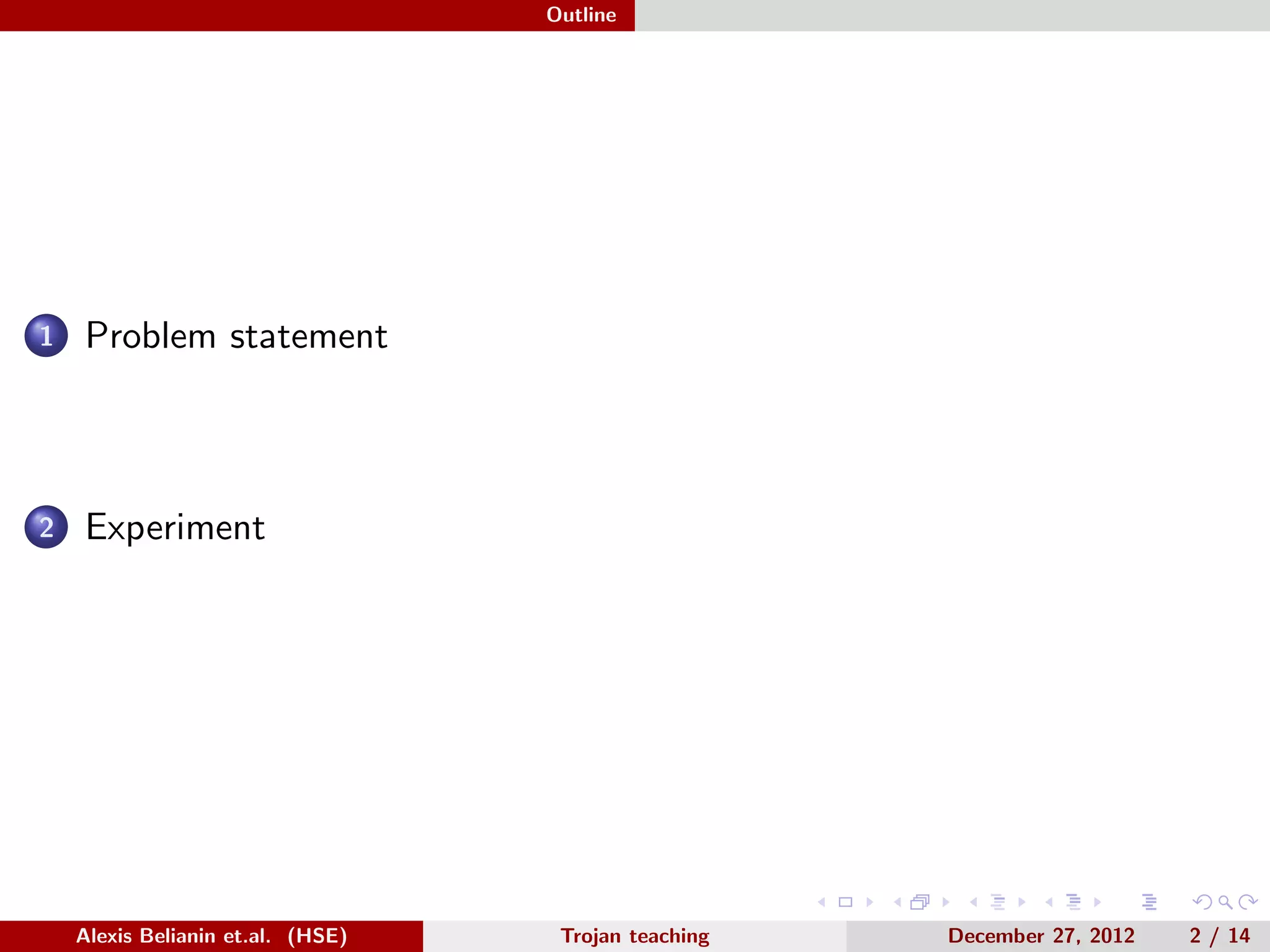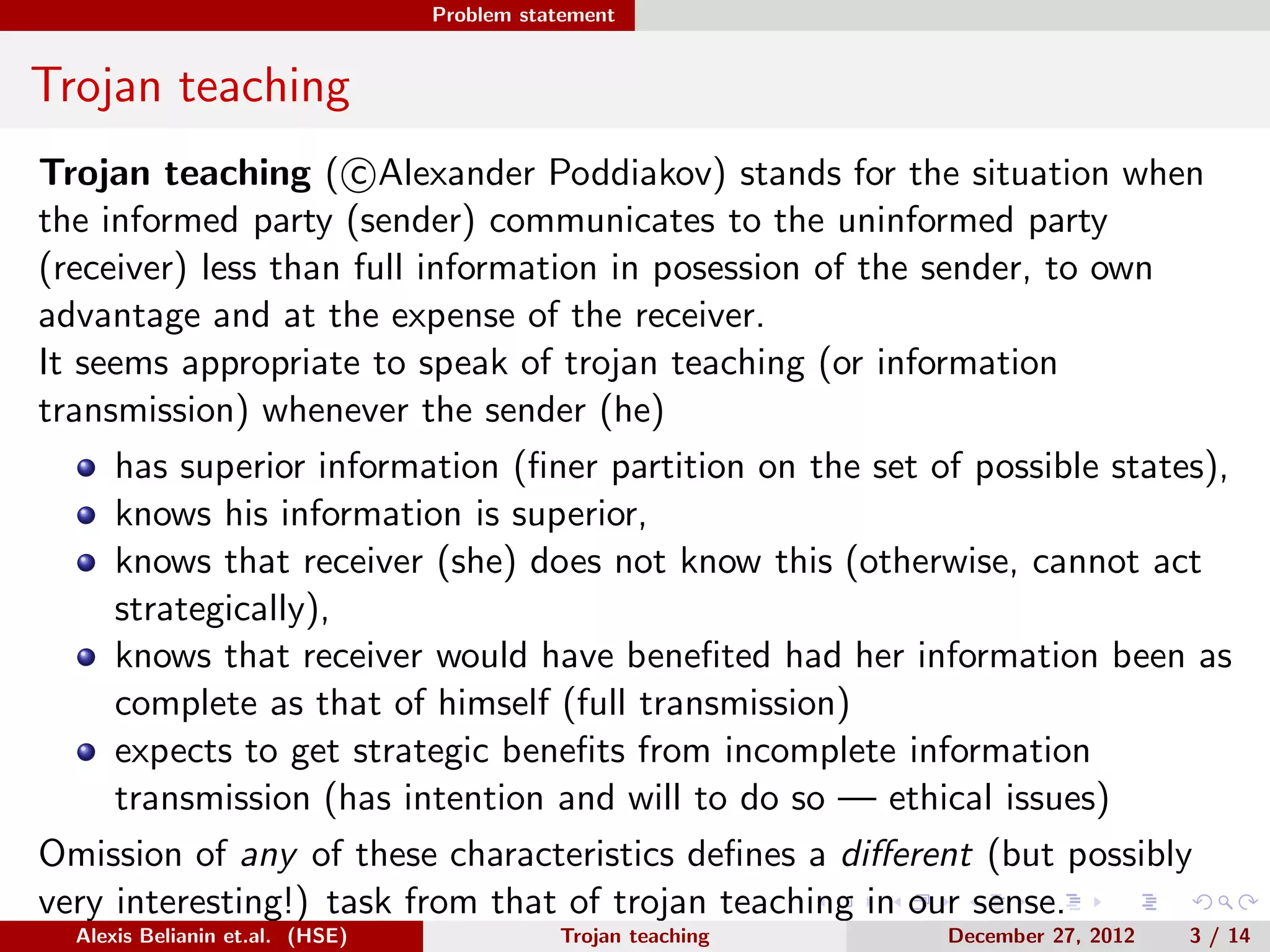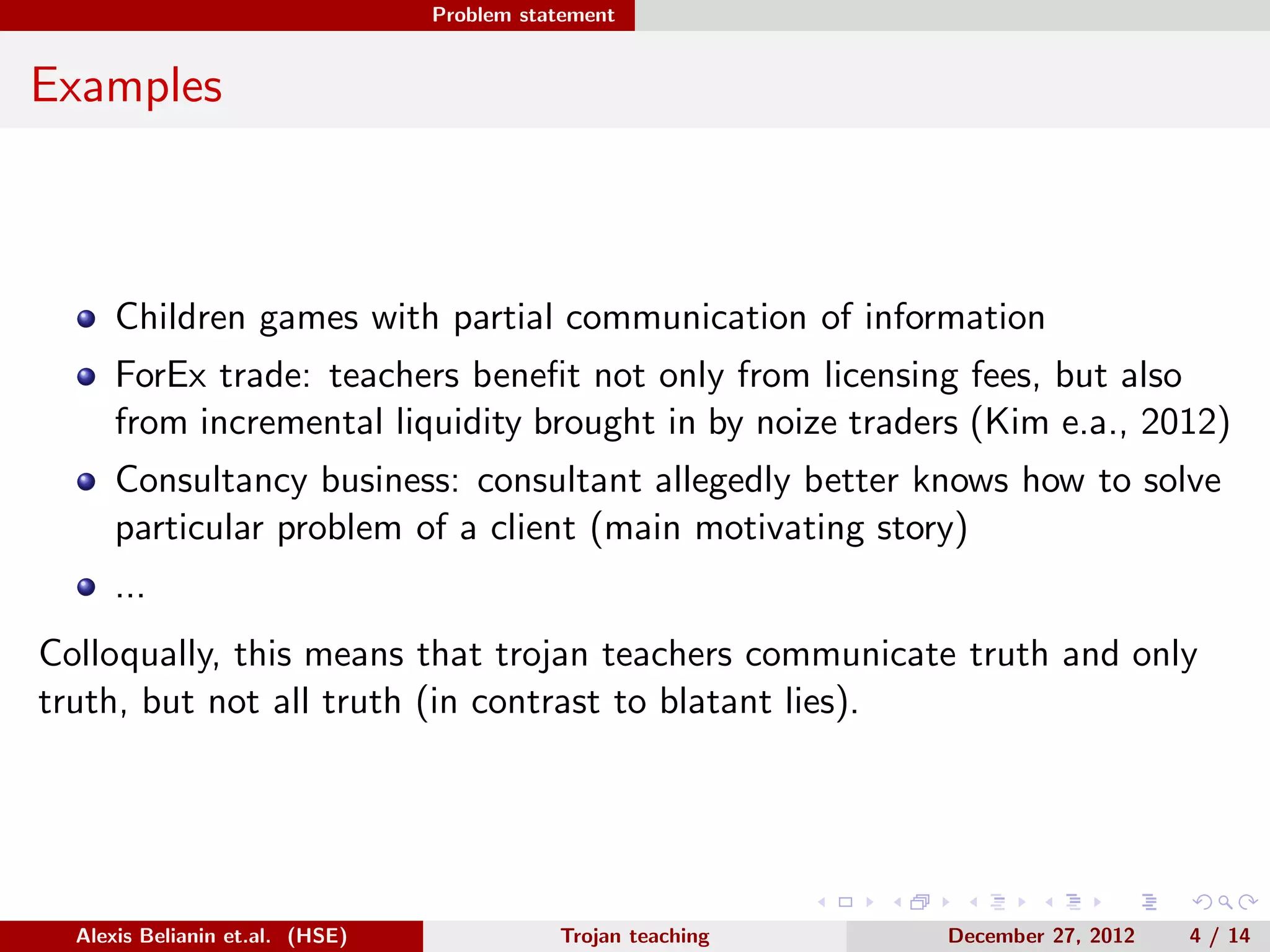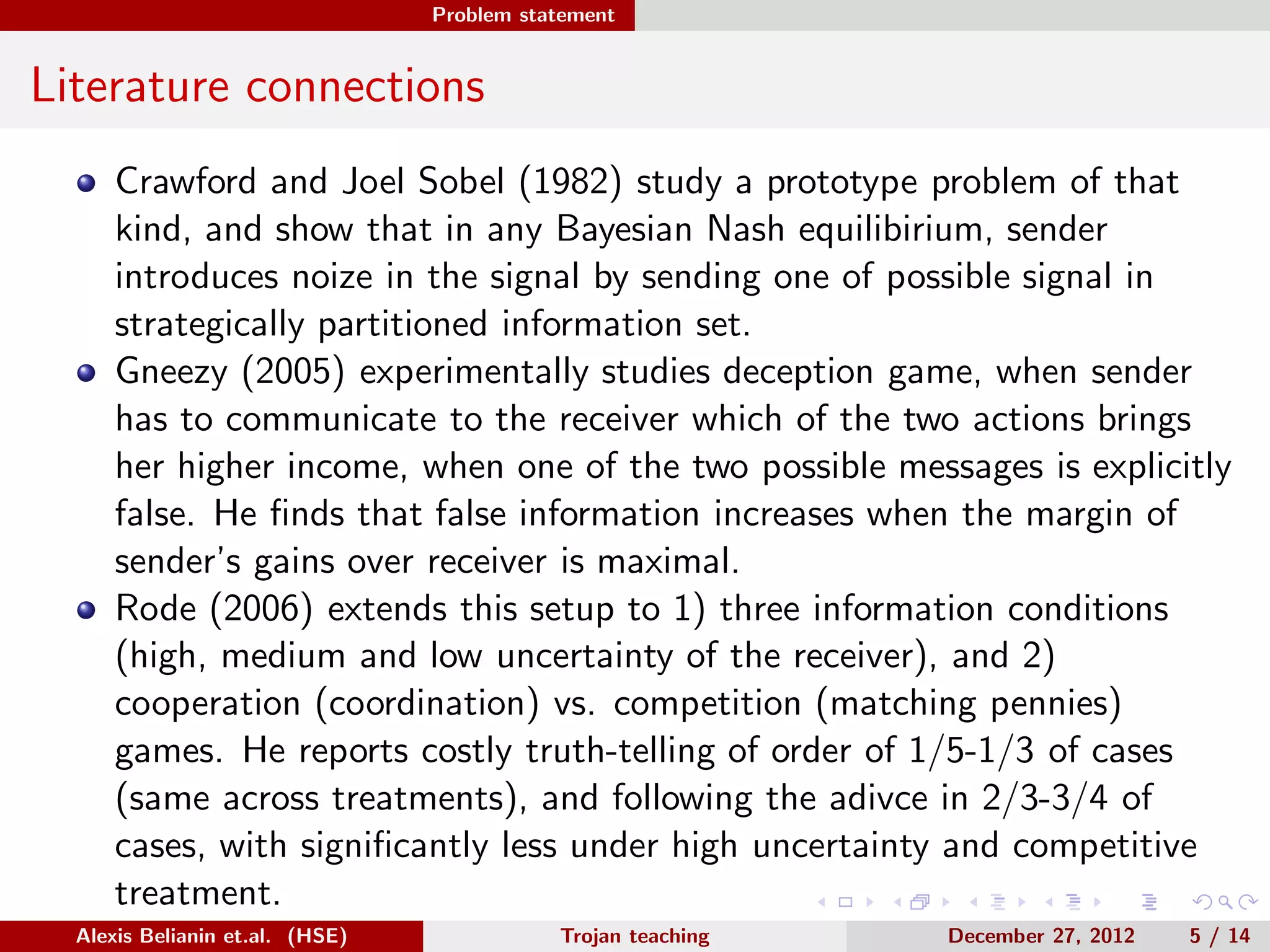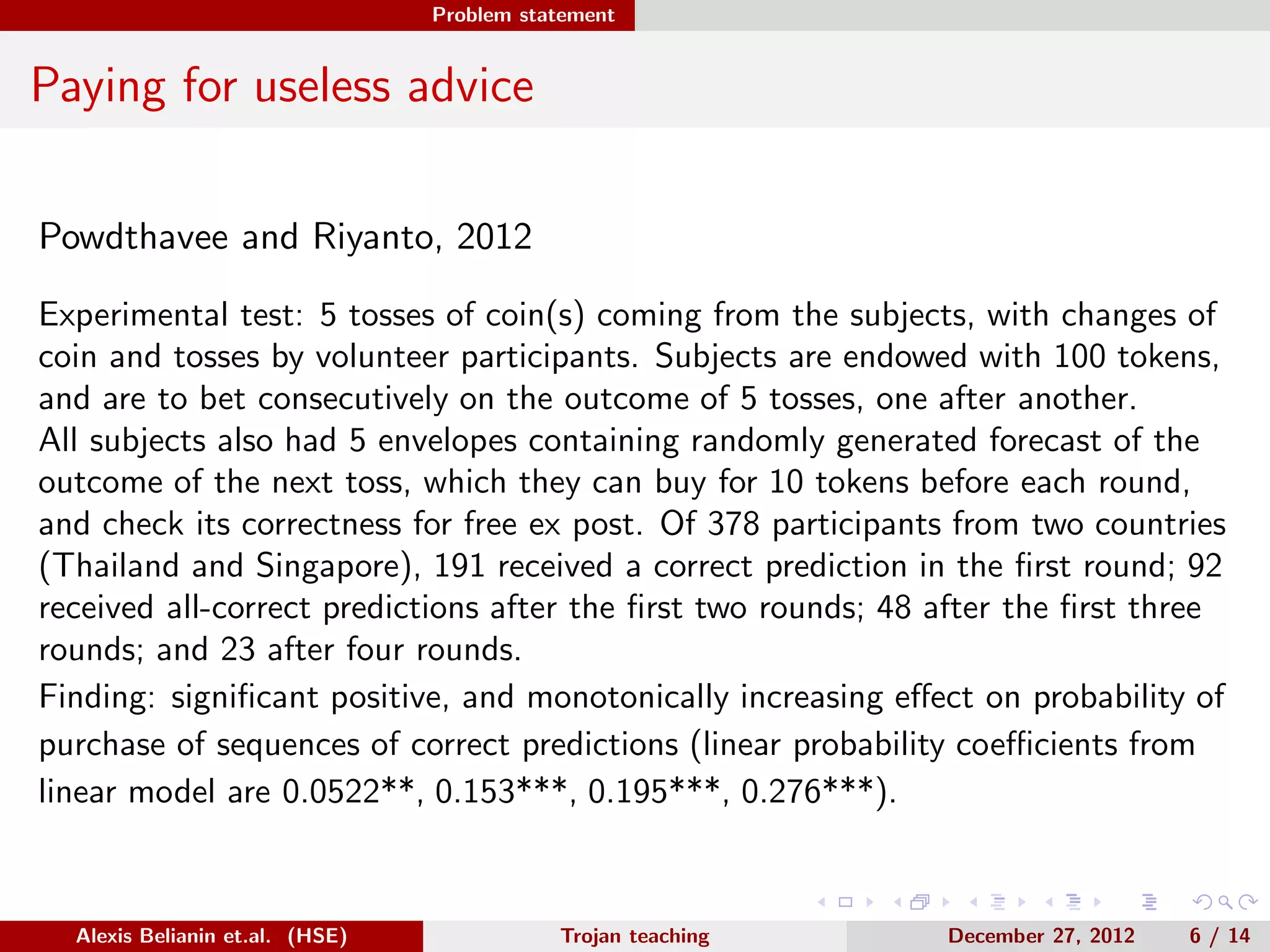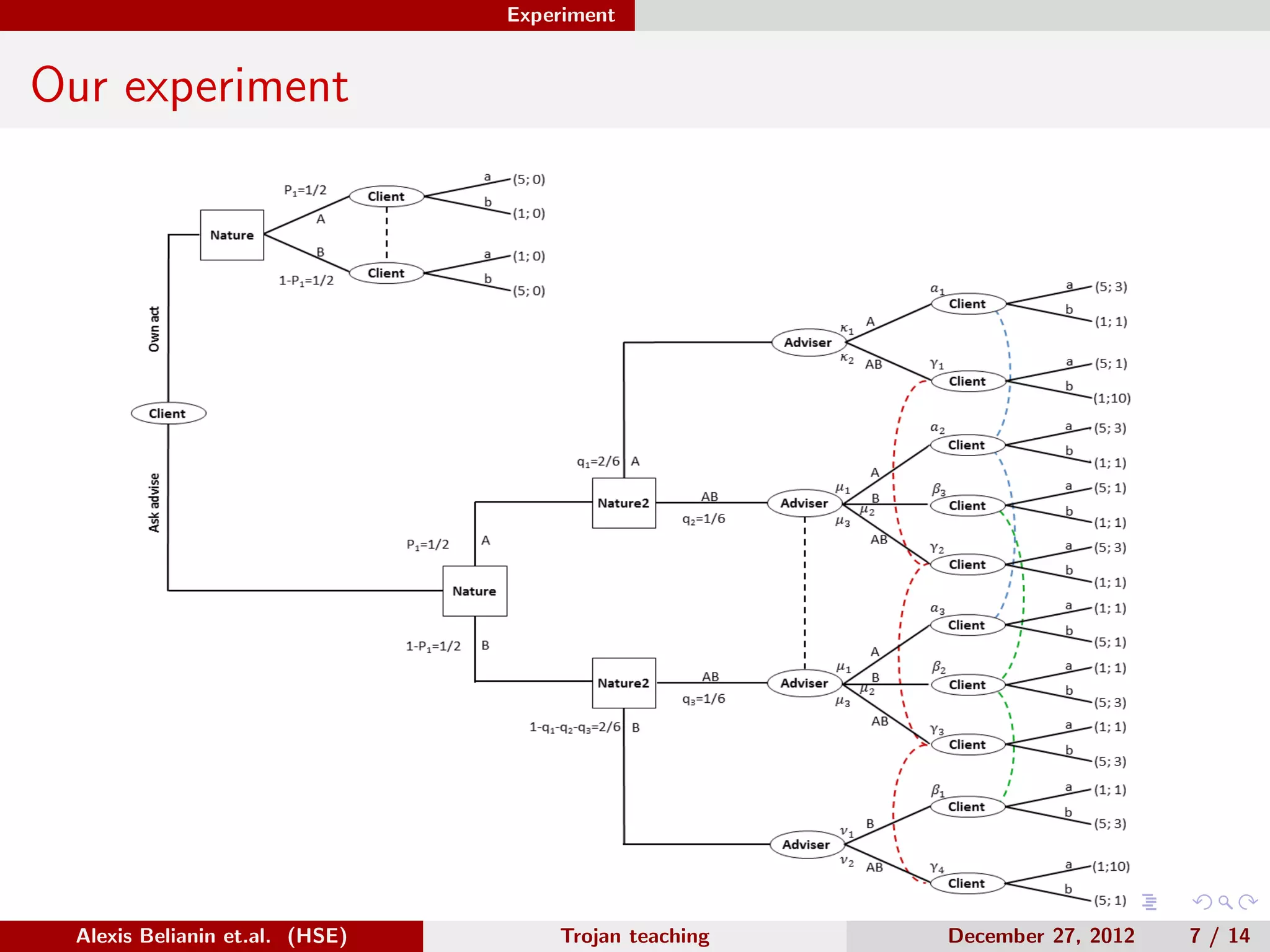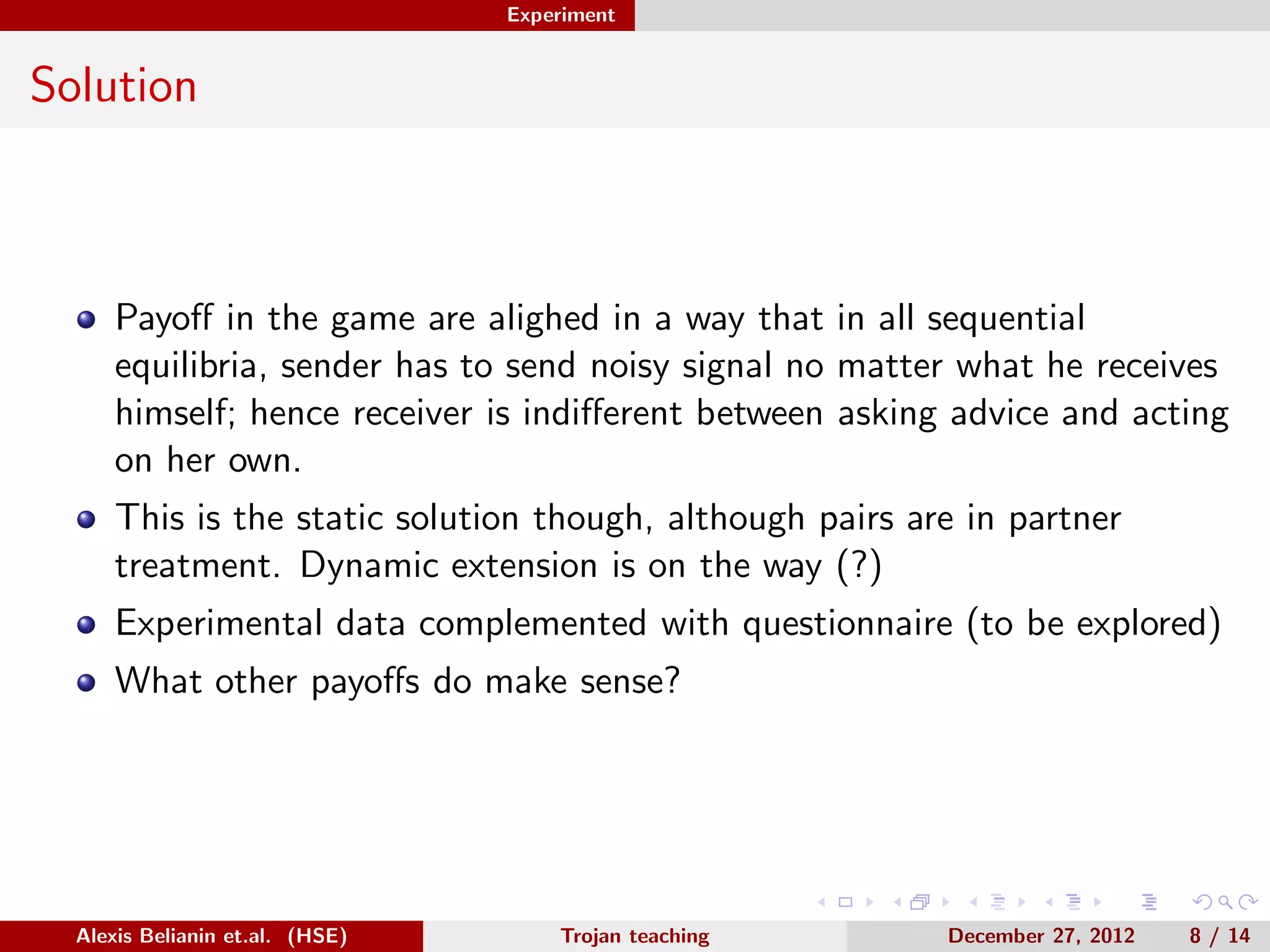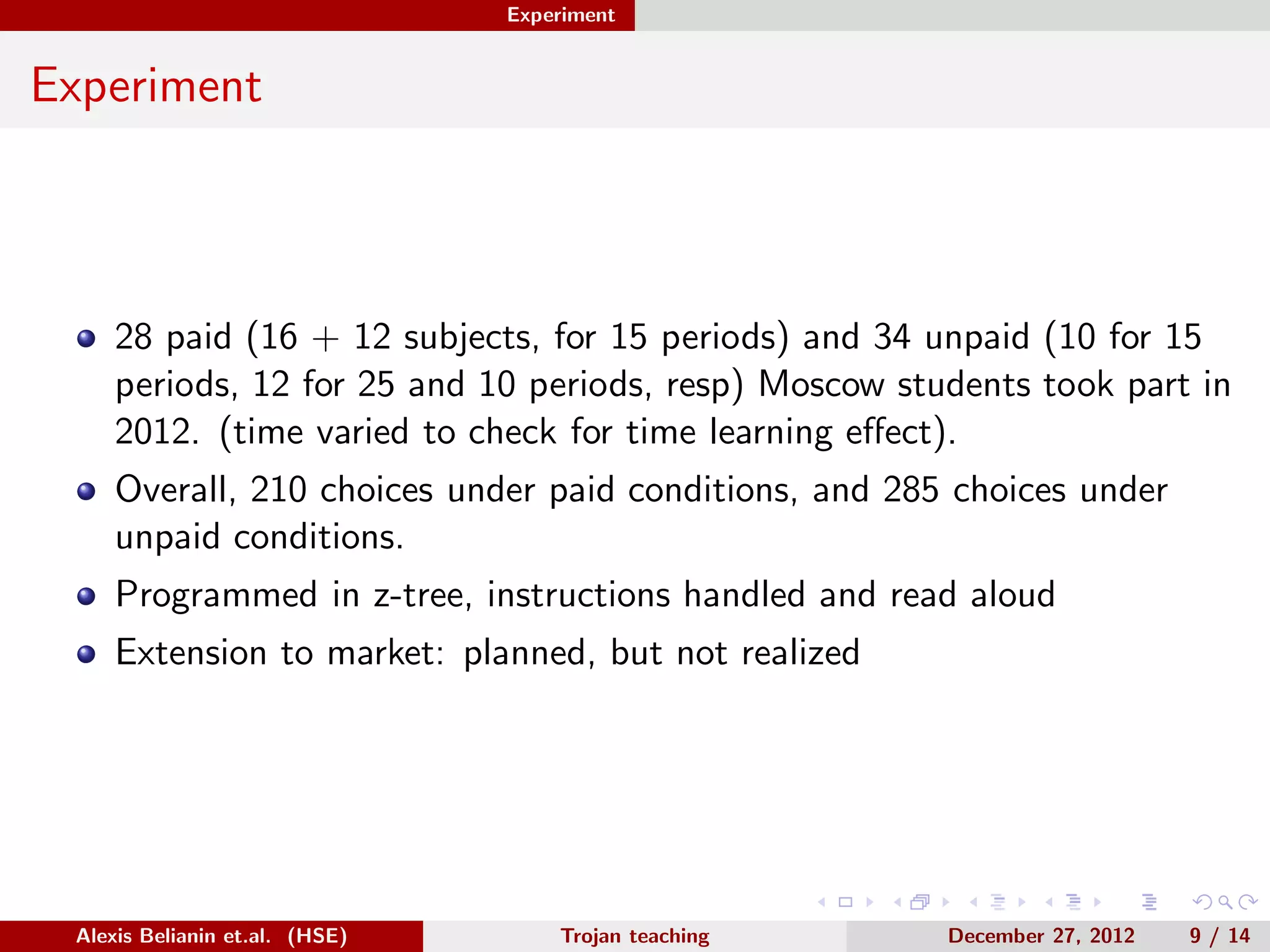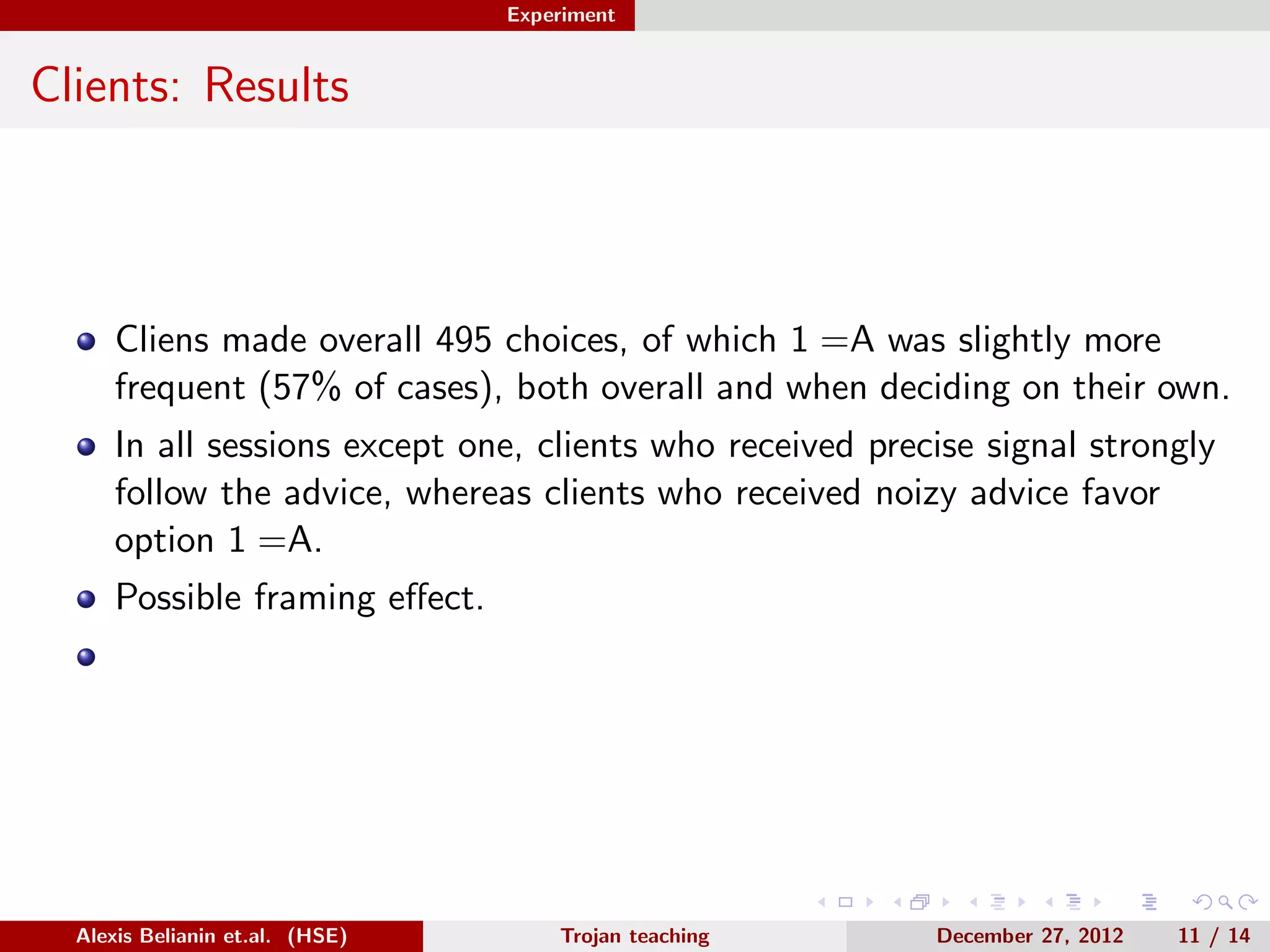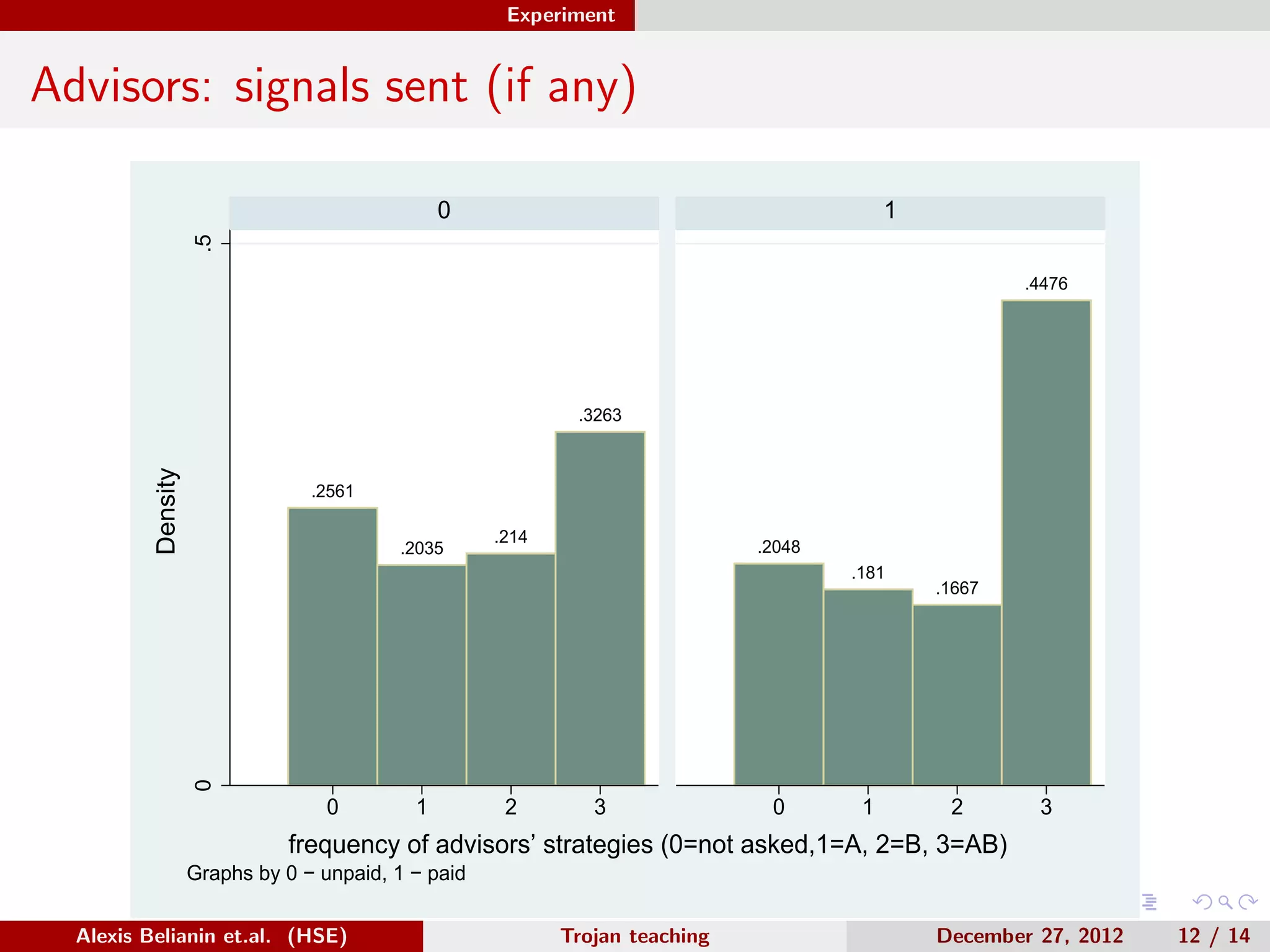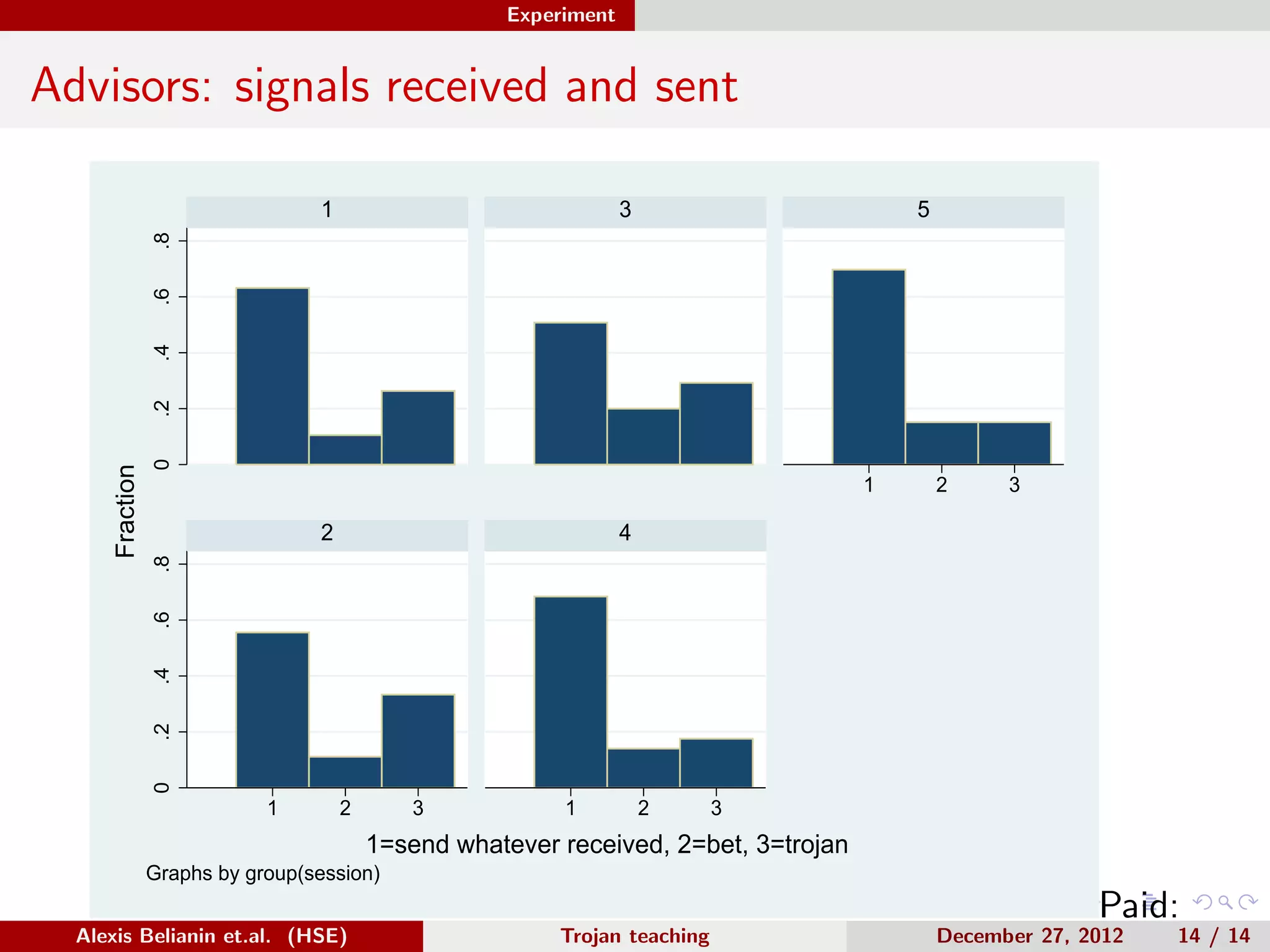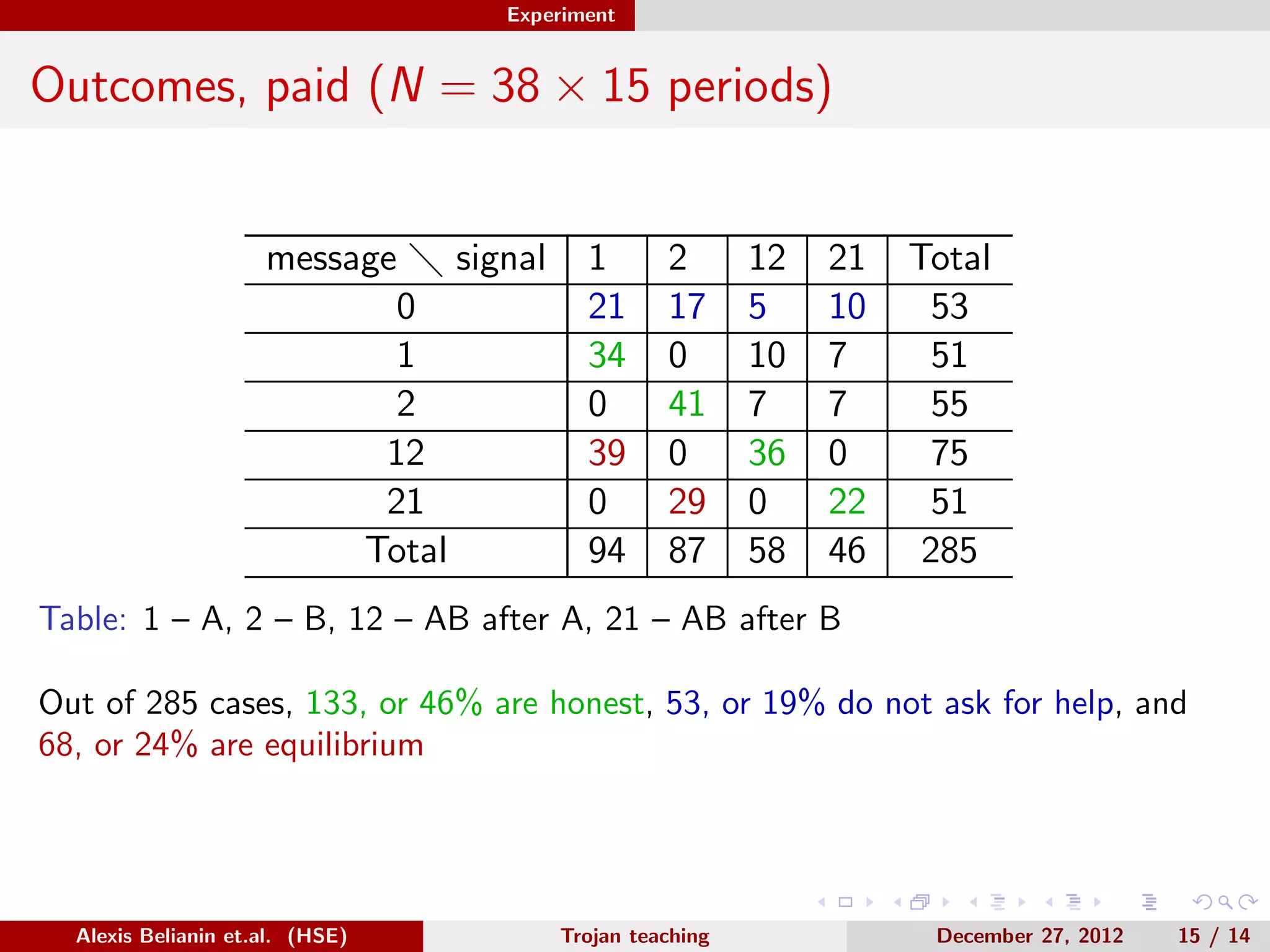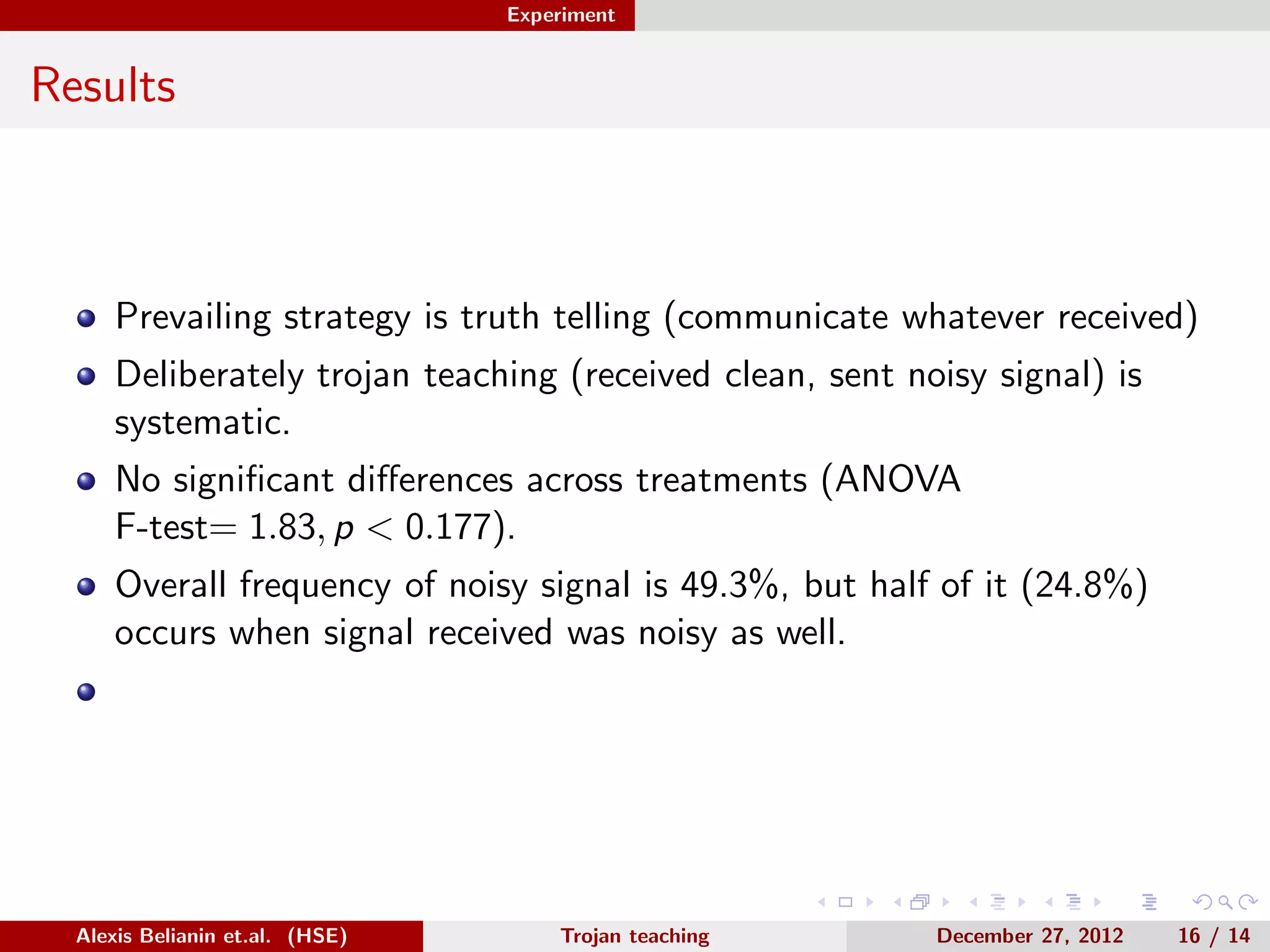Strategic information transmission (trojan teaching) in client-consultant relationships.
The document discusses an experiment on "trojan teaching", where an informed party (consultant) communicates less than full information to an uninformed party (client) for their own benefit. The experiment finds advisors under unpaid conditions send "noisy" signals that do not fully reflect their private information more often. Clients who receive precise signals from advisors strongly follow their advice, while clients receiving noisy advice favor one option. Overall, advisors told the truth 46% of the time and sent deliberately noisy signals 24% of the time.
